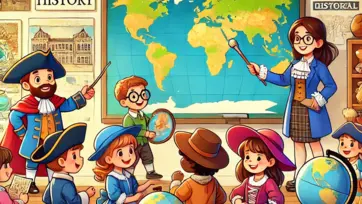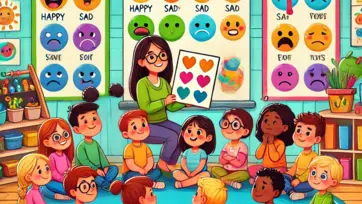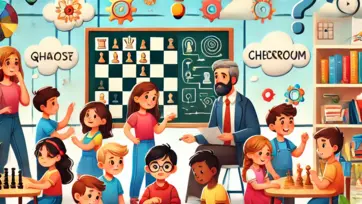Reading is a crucial skill that plays a significant role in a child's overall development. Encouraging children to read from an early age helps improve their vocabulary, comprehension, and critical thinking. Whether your child is just beginning to read or looking to expand their literacy skills, the right books can make all the difference. Here are some of the best books to help kids boost their reading skills and develop a love for reading.
1. Books for Early Readers (Ages 3-6)
At this stage, children are just starting to recognize words and develop their reading confidence. Books with simple sentences, repetition, and colorful illustrations work best.
Recommended Books:
- “Brown Bear, Brown Bear, What Do You See?” by Bill Martin Jr. – Uses repetitive text to help kids anticipate words.
- “The Very Hungry Caterpillar” by Eric Carle – Engaging illustrations and simple storytelling.
- “Goodnight Moon” by Margaret Wise Brown – A calming bedtime story with easy-to-read phrases.
- “Hop on Pop” by Dr. Seuss – Rhyming words help early readers build phonics skills.
- “Chicka Chicka Boom Boom” by Bill Martin Jr. – Introduces the alphabet in a fun and rhythmic way.
2. Books for Emerging Readers (Ages 6-8)
Children at this stage begin to read more independently and can handle slightly more complex words and sentence structures.
Recommended Books:
- “Elephant & Piggie” series by Mo Willems – Simple but engaging dialogue-driven stories.
- “Frog and Toad Are Friends” by Arnold Lobel – A collection of heartwarming short stories for young readers.
- “Amelia Bedelia” by Peggy Parish – Teaches children the humor of wordplay and idioms.
- “Henry and Mudge” series by Cynthia Rylant – Follows the adventures of a boy and his big dog, helping kids relate to real-life experiences.
- “Biscuit” series by Alyssa Satin Capucilli – Easy-to-read, repetitive stories that build confidence.
3. Books for Developing Readers (Ages 8-10)
At this level, kids are ready for chapter books with more engaging plots and expanded vocabulary.
Recommended Books:
- “Magic Tree House” series by Mary Pope Osborne – Adventure-packed books that mix history and fantasy.
- “The Boxcar Children” series by Gertrude Chandler Warner – Simple mysteries that enhance problem-solving skills.
- “Charlotte’s Web” by E.B. White – A heartwarming story that teaches friendship and compassion.
- “Judy Moody” series by Megan McDonald – A humorous and relatable series for young readers.
- “Diary of a Wimpy Kid” by Jeff Kinney – Encourages reluctant readers with its mix of comics and text.
4. Books for Advanced Readers (Ages 10-12)
Older kids benefit from books with more complex storytelling and deeper themes.
Recommended Books:
- “Percy Jackson & The Olympians” series by Rick Riordan – A mix of adventure, mythology, and humor.
- “Harry Potter” series by J.K. Rowling – Engaging fantasy that encourages a love for longer reads.
- “Wonder” by R.J. Palacio – A touching novel about kindness and acceptance.
- “The Chronicles of Narnia” by C.S. Lewis – A classic fantasy series that develops imagination.
- “Holes” by Louis Sachar – A compelling story with mystery and humor.
5. Non-Fiction Books to Expand Knowledge
Non-fiction books help children learn new concepts while improving their reading skills.
Recommended Books:
- “National Geographic Kids” series – Covers fascinating topics with stunning visuals.
- “I Am Malala (Young Readers Edition)” by Malala Yousafzai – Inspires kids with a real-life story of courage.
- “Who Was?” series – Biographies that introduce historical figures in an easy-to-read format.
- “The Magic School Bus” series by Joanna Cole – Combines science and adventure in an engaging way.
- “How Things Work” by DK Publishing – Explains the mechanics behind everyday objects.
6. Interactive and Activity Books
Activity books encourage engagement and reinforce reading through fun exercises.
Recommended Books:
- “Mad Libs” – A fun way to improve vocabulary and grammar skills.
- “Brain Quest Workbooks” – Engaging activities that build reading comprehension.
- “Usborne Look Inside” series – Lift-the-flap books that encourage curiosity.
- “Where’s Waldo?” by Martin Handford – Improves focus and observation skills.
- “I Spy” books by Jean Marzollo – Encourages critical thinking and word recognition.
7. Tips to Encourage Reading in Kids
Along with providing great books, parents and teachers can help kids develop a habit of reading.
Helpful Tips:
- Make reading a daily habit – Set aside time each day for reading.
- Let kids choose their books – Allowing them to pick books based on their interests keeps them engaged.
- Read together – Shared reading time strengthens comprehension and interest.
- Create a cozy reading space – A comfortable environment makes reading enjoyable.
- Discuss books – Talking about stories helps with retention and comprehension.
Conclusion
Encouraging children to read from an early age sets the foundation for lifelong learning. Choosing the right books for their reading level and interests will help them develop strong literacy skills and a passion for reading. Whether through fiction, non-fiction, or interactive books, fostering a love for reading ensures that kids grow into confident and capable readers.








